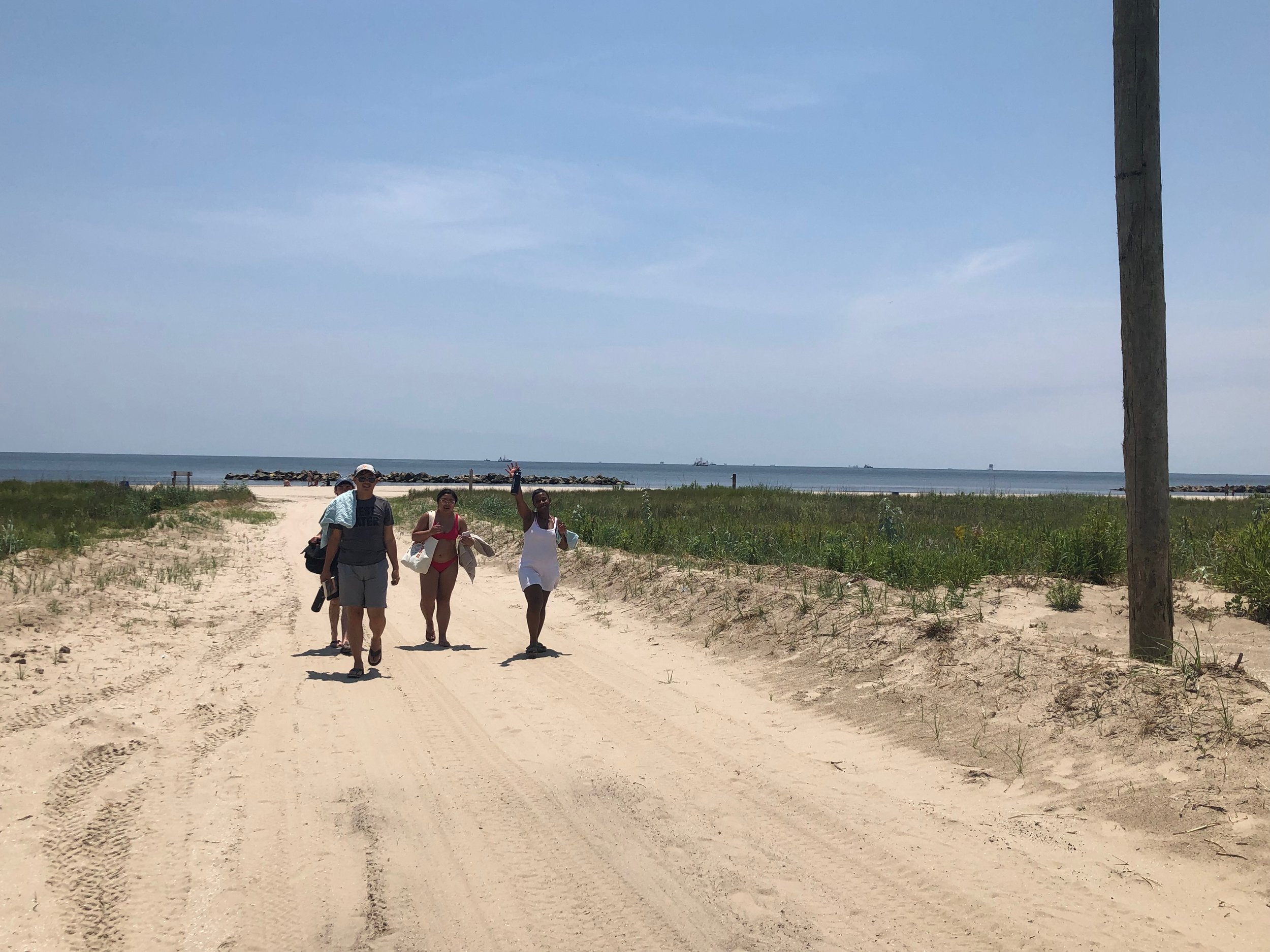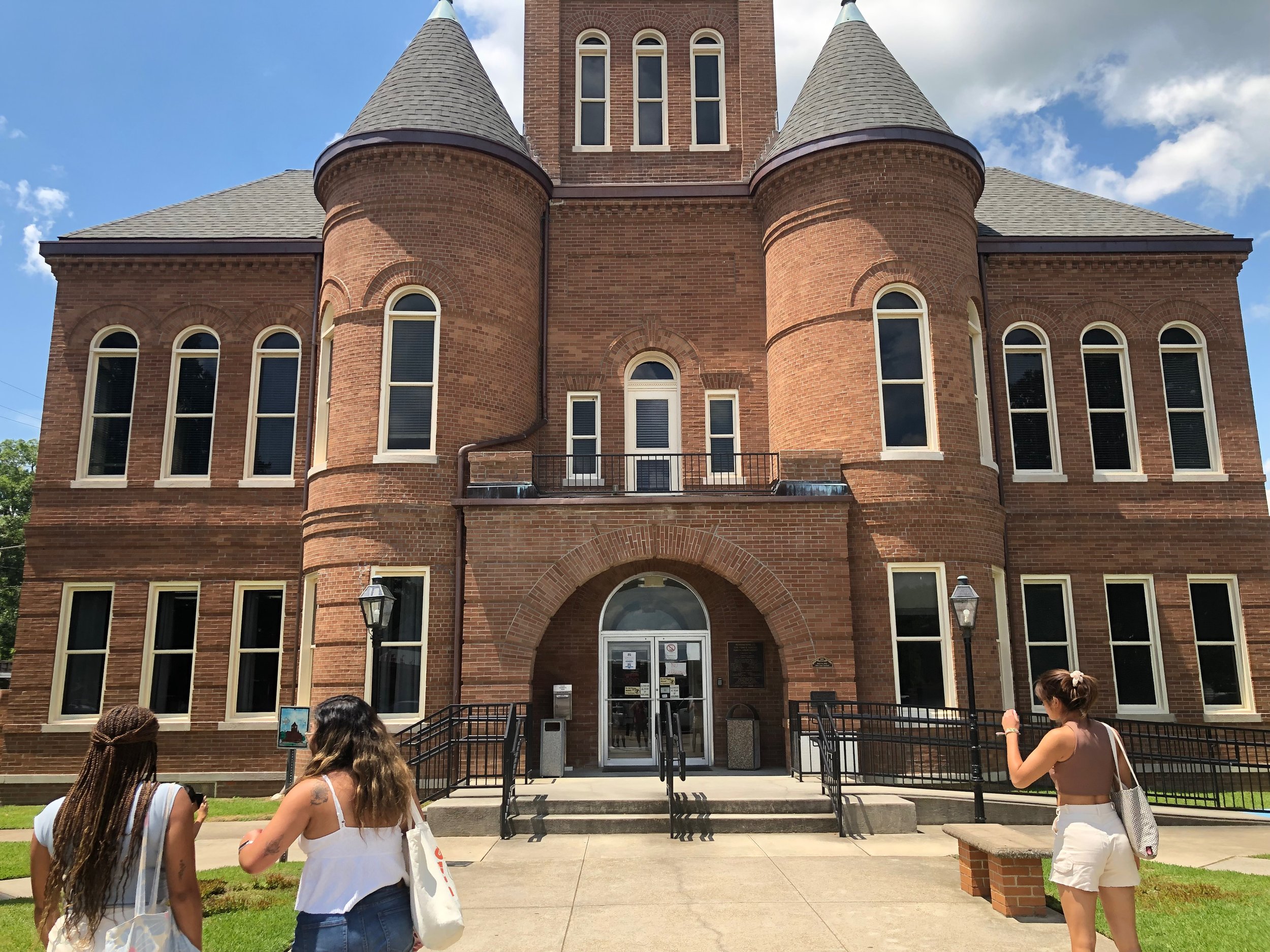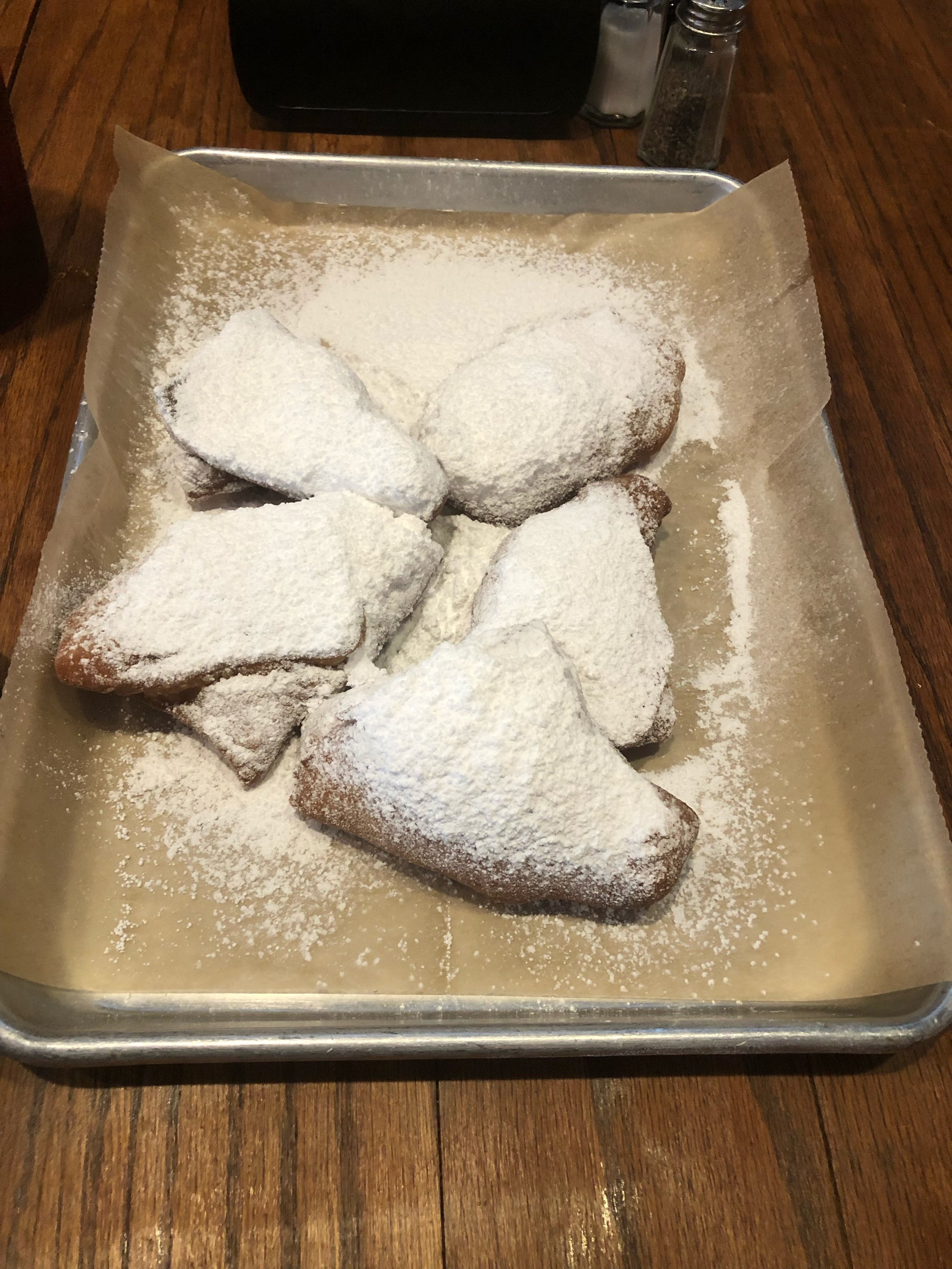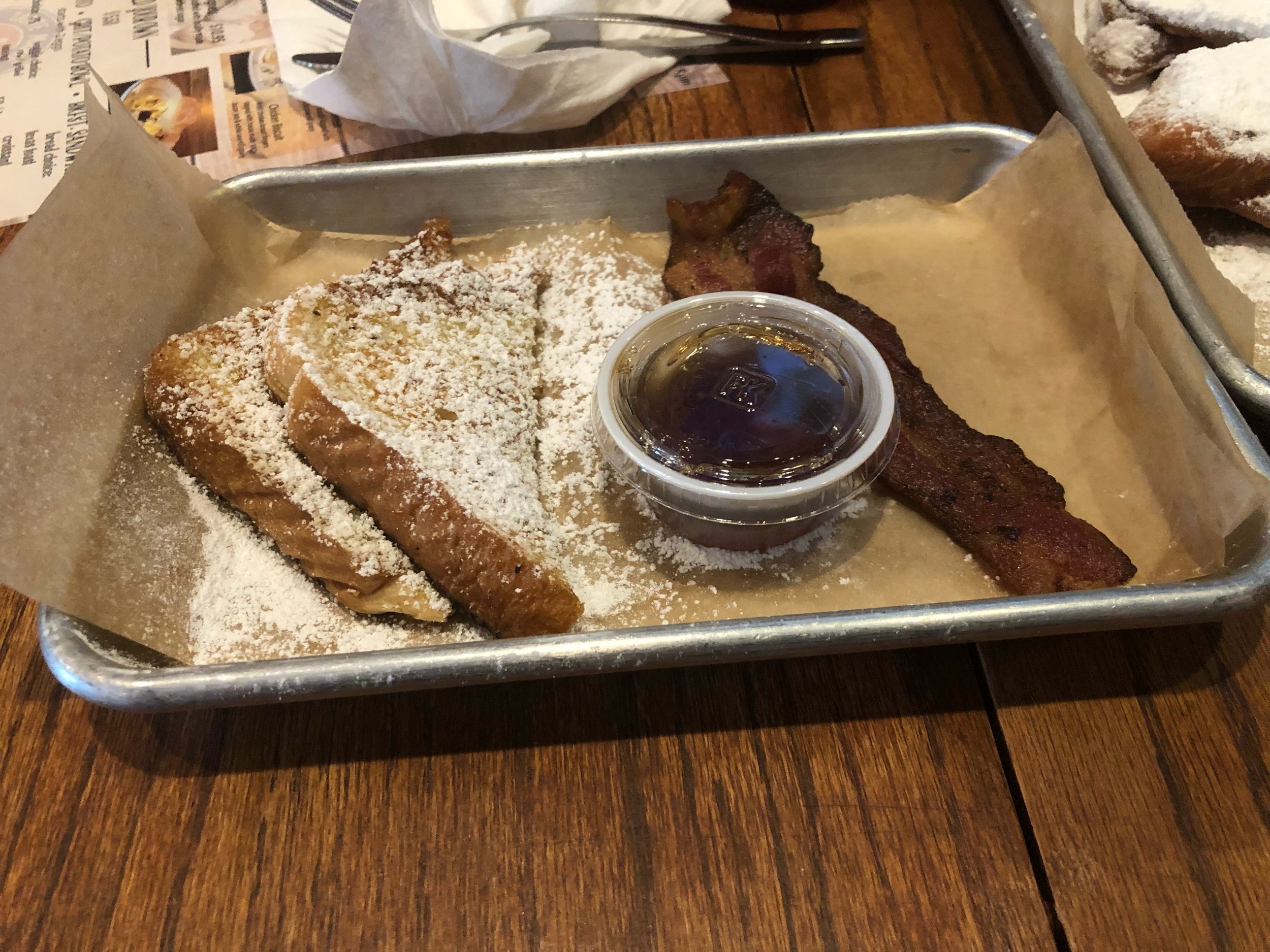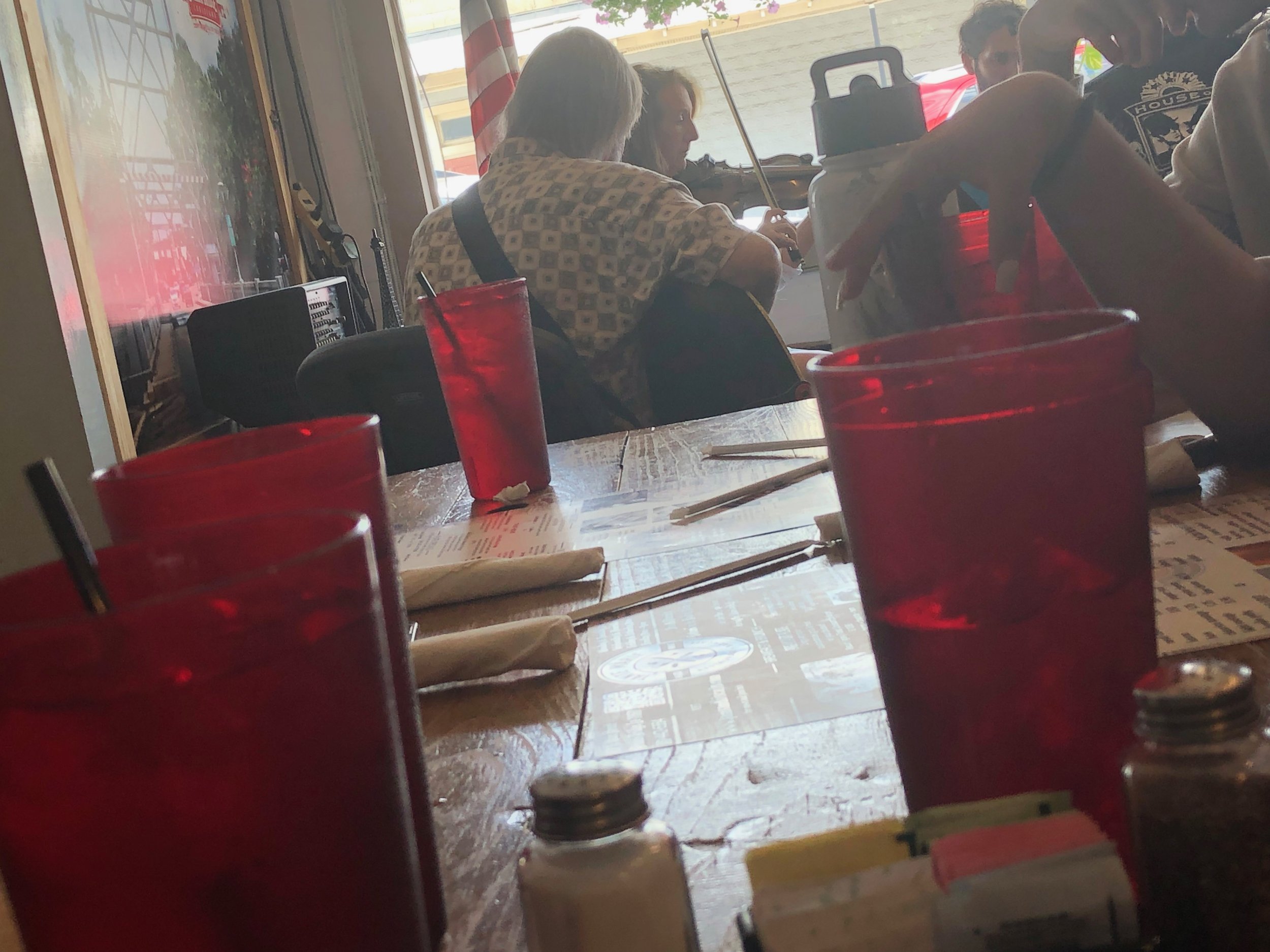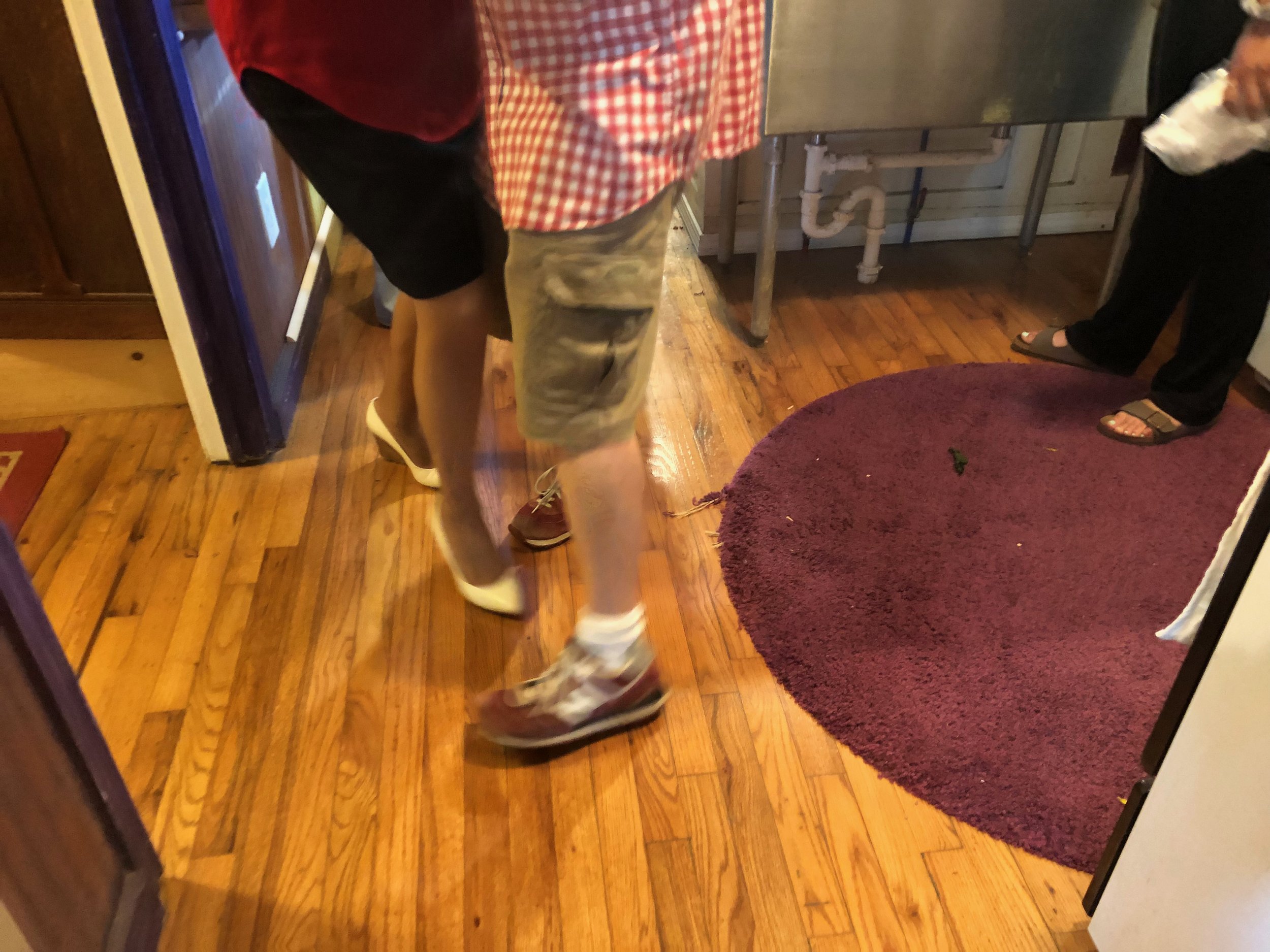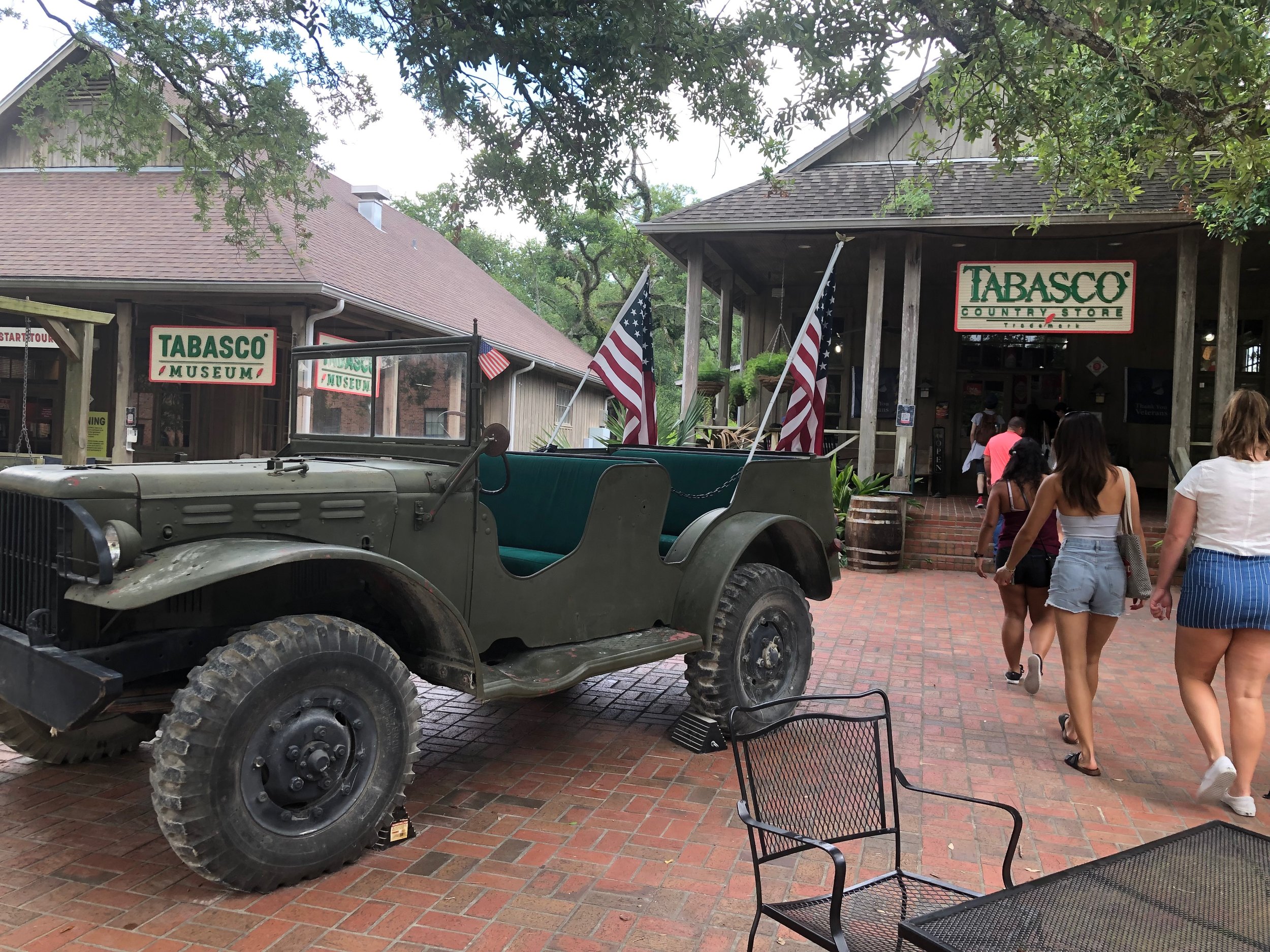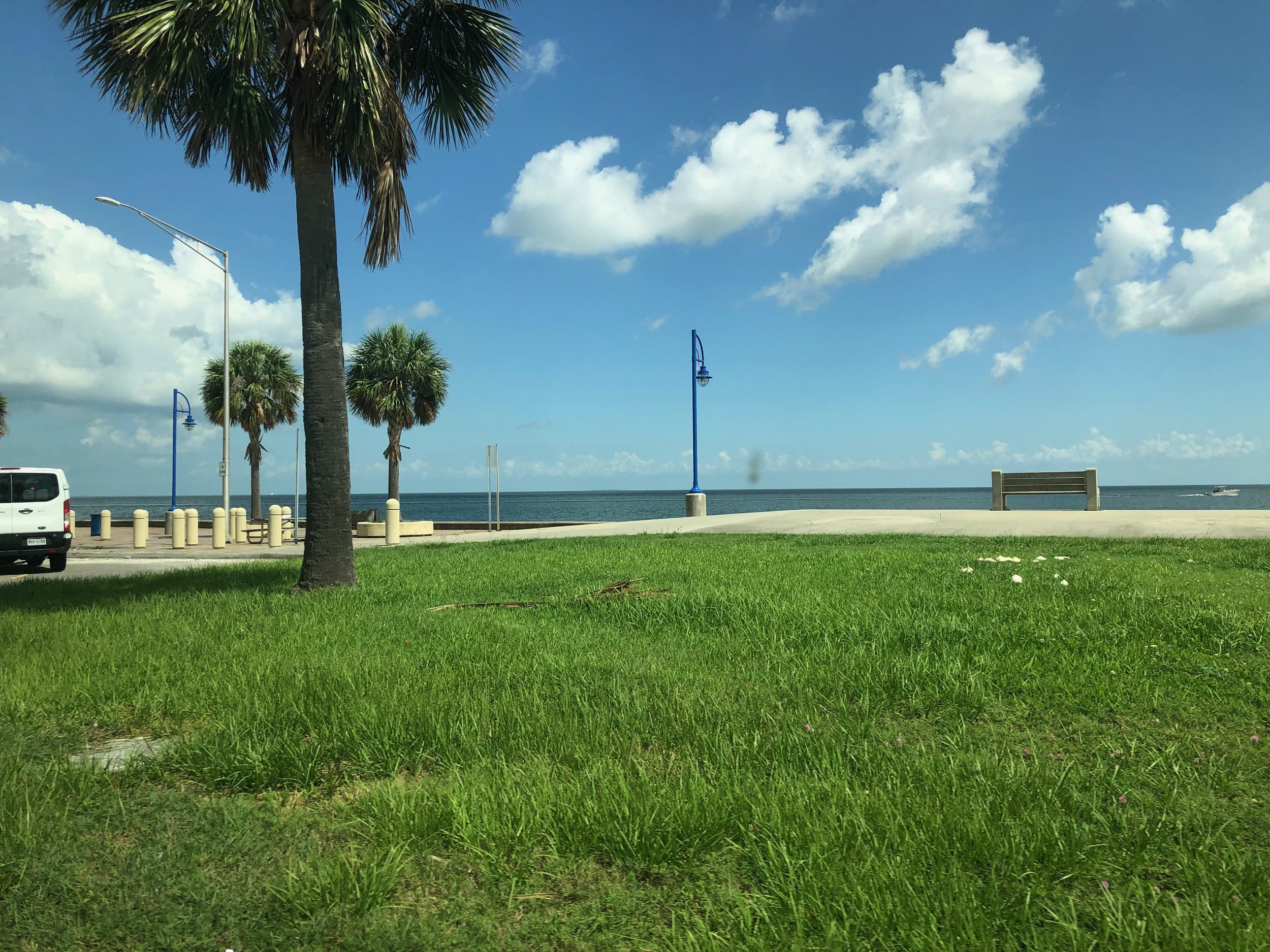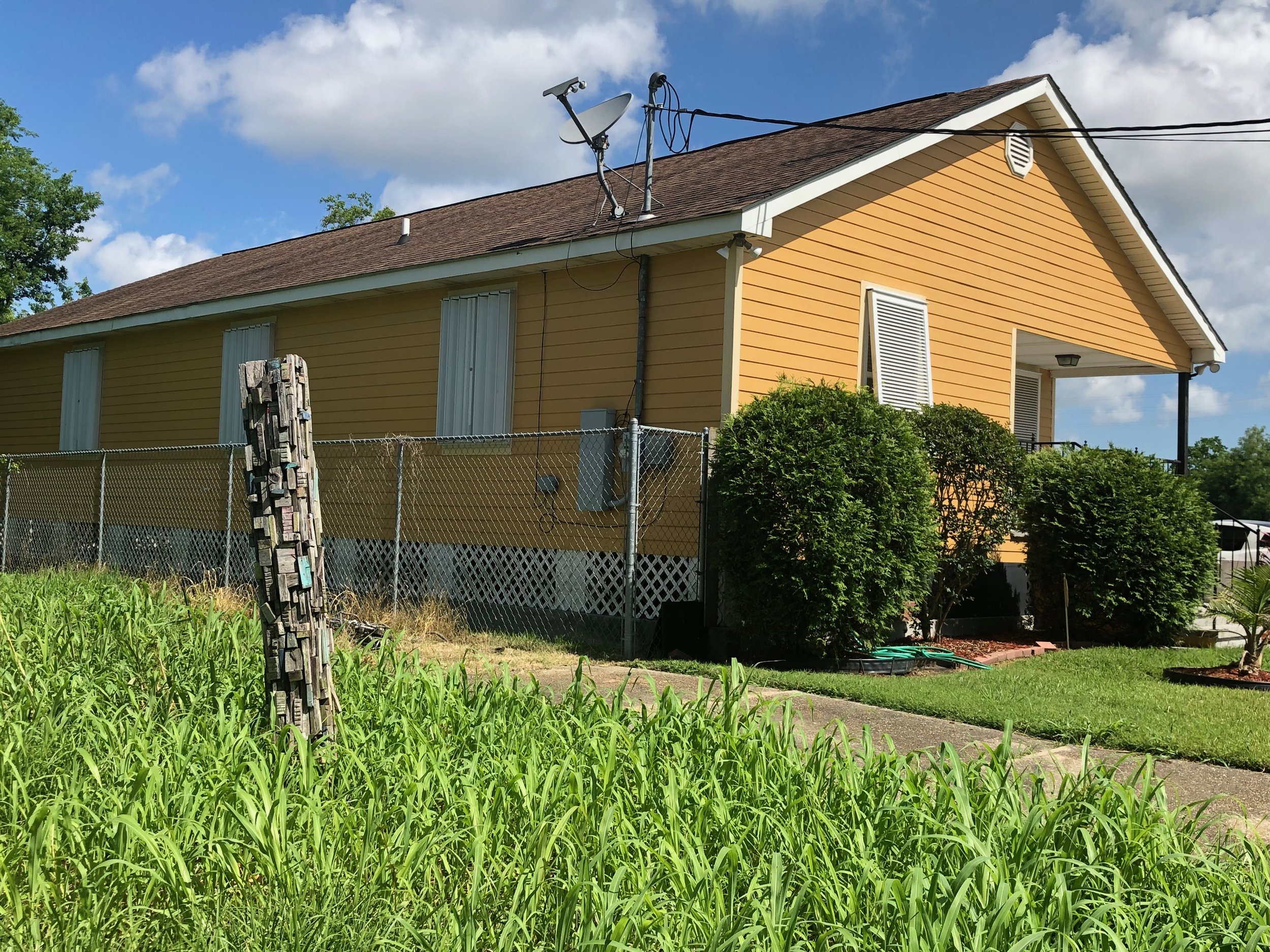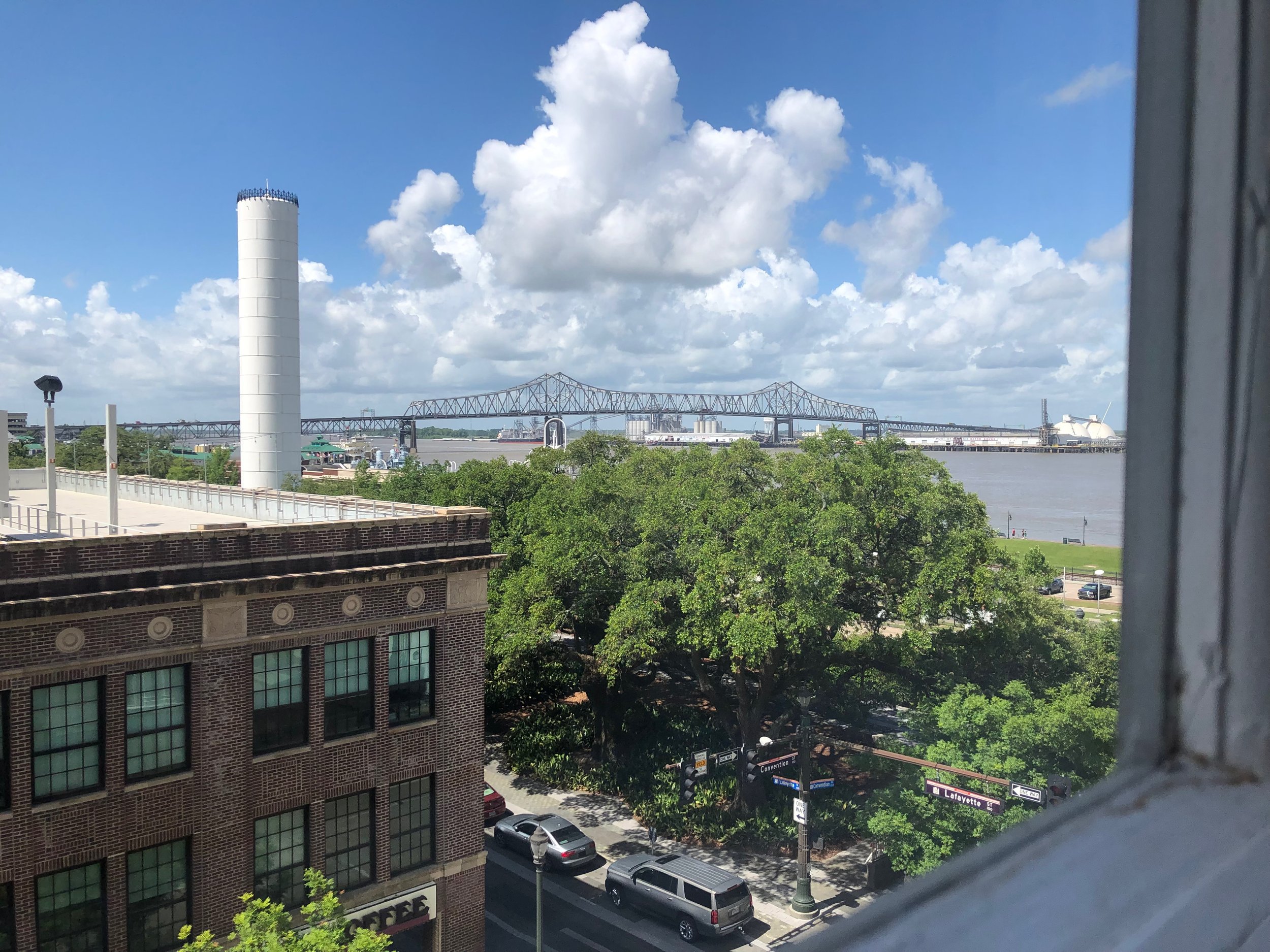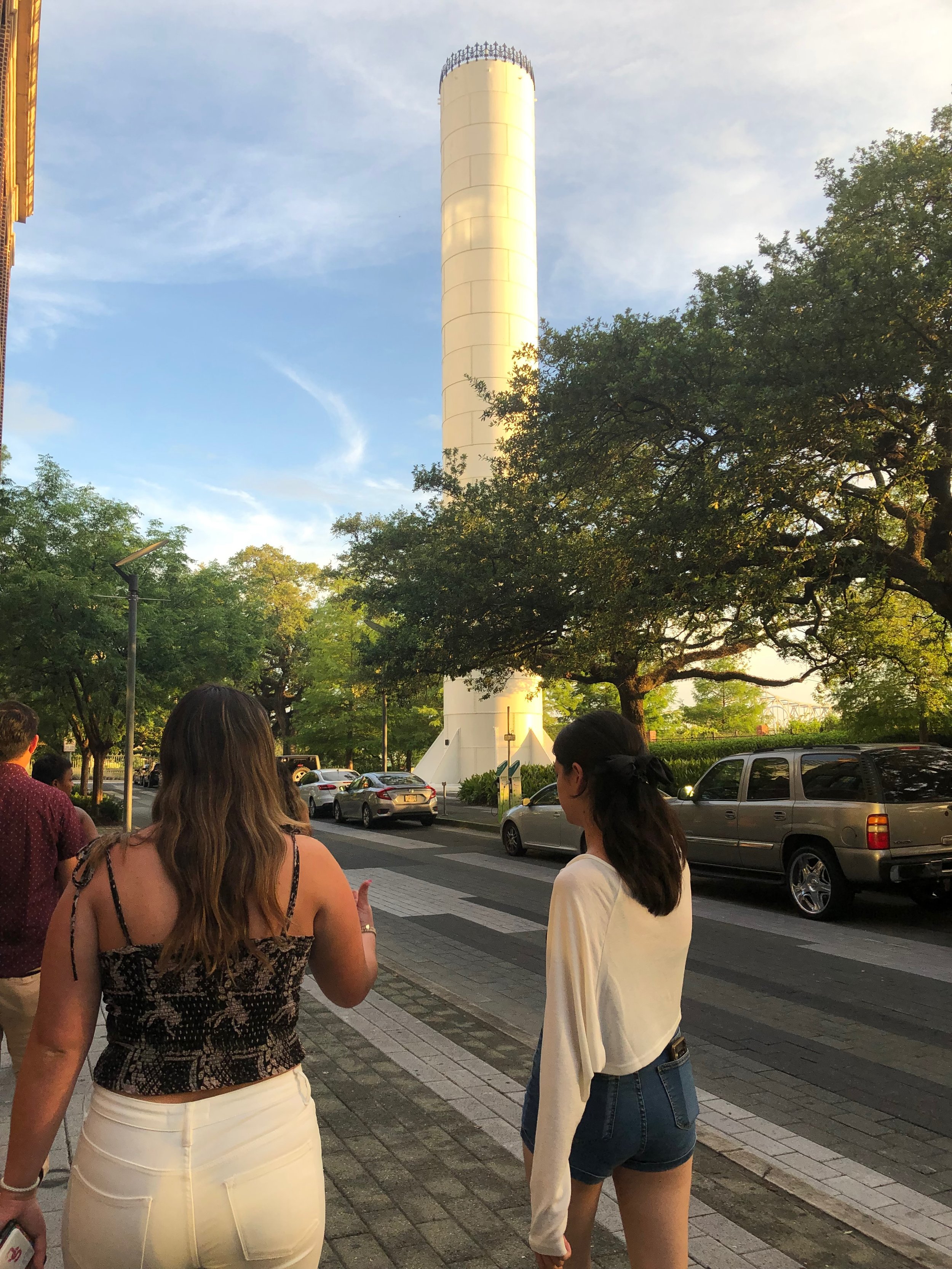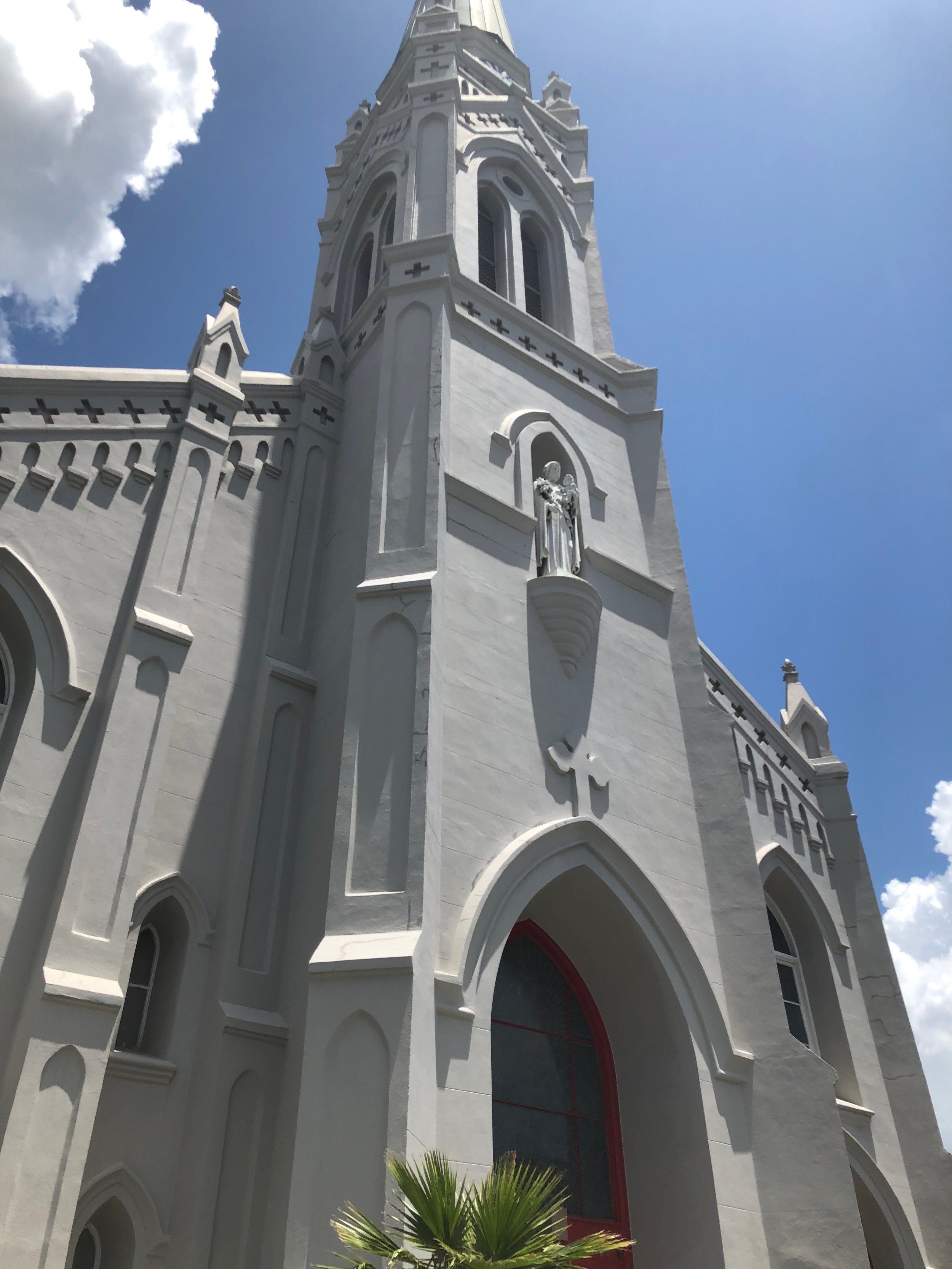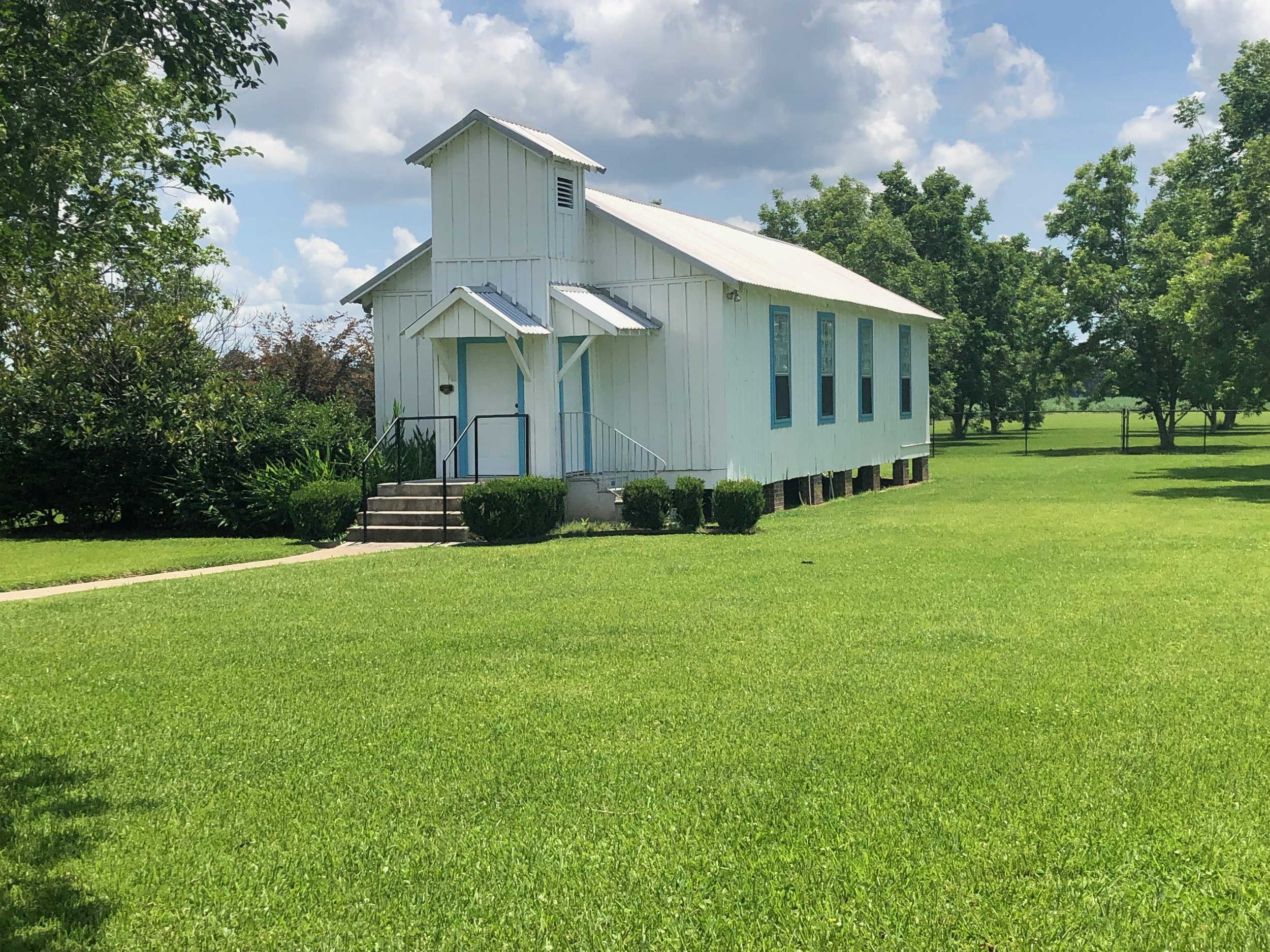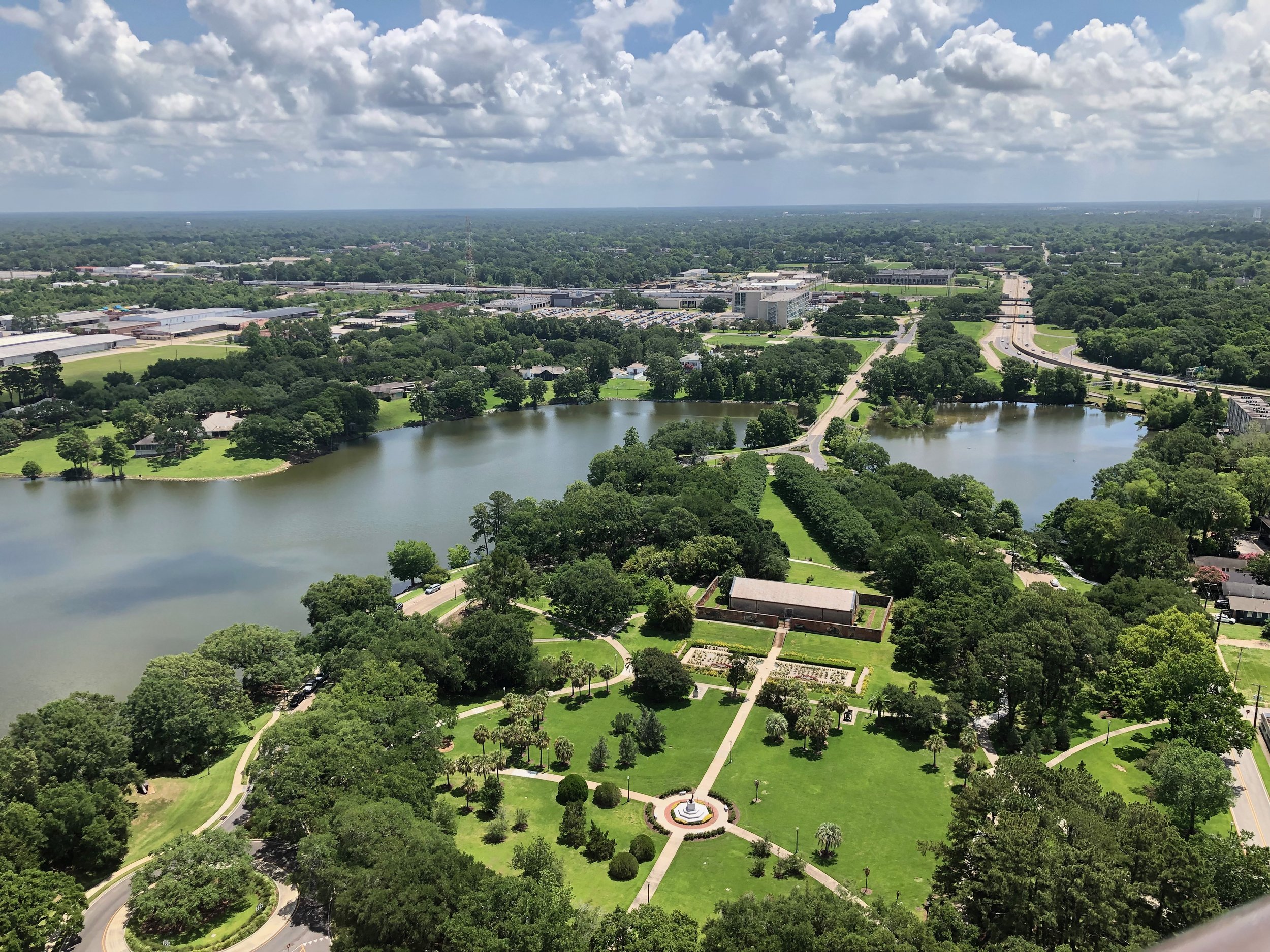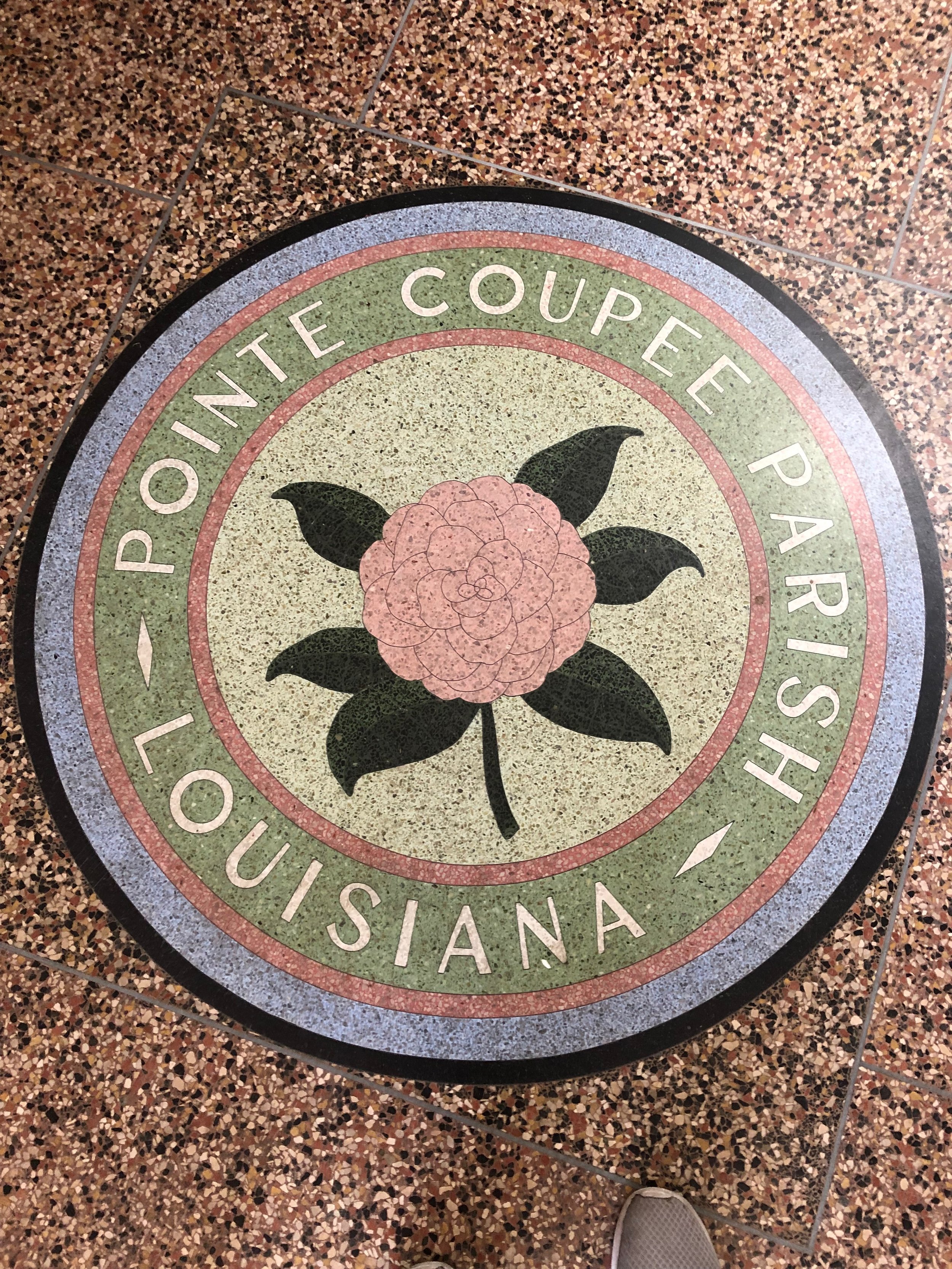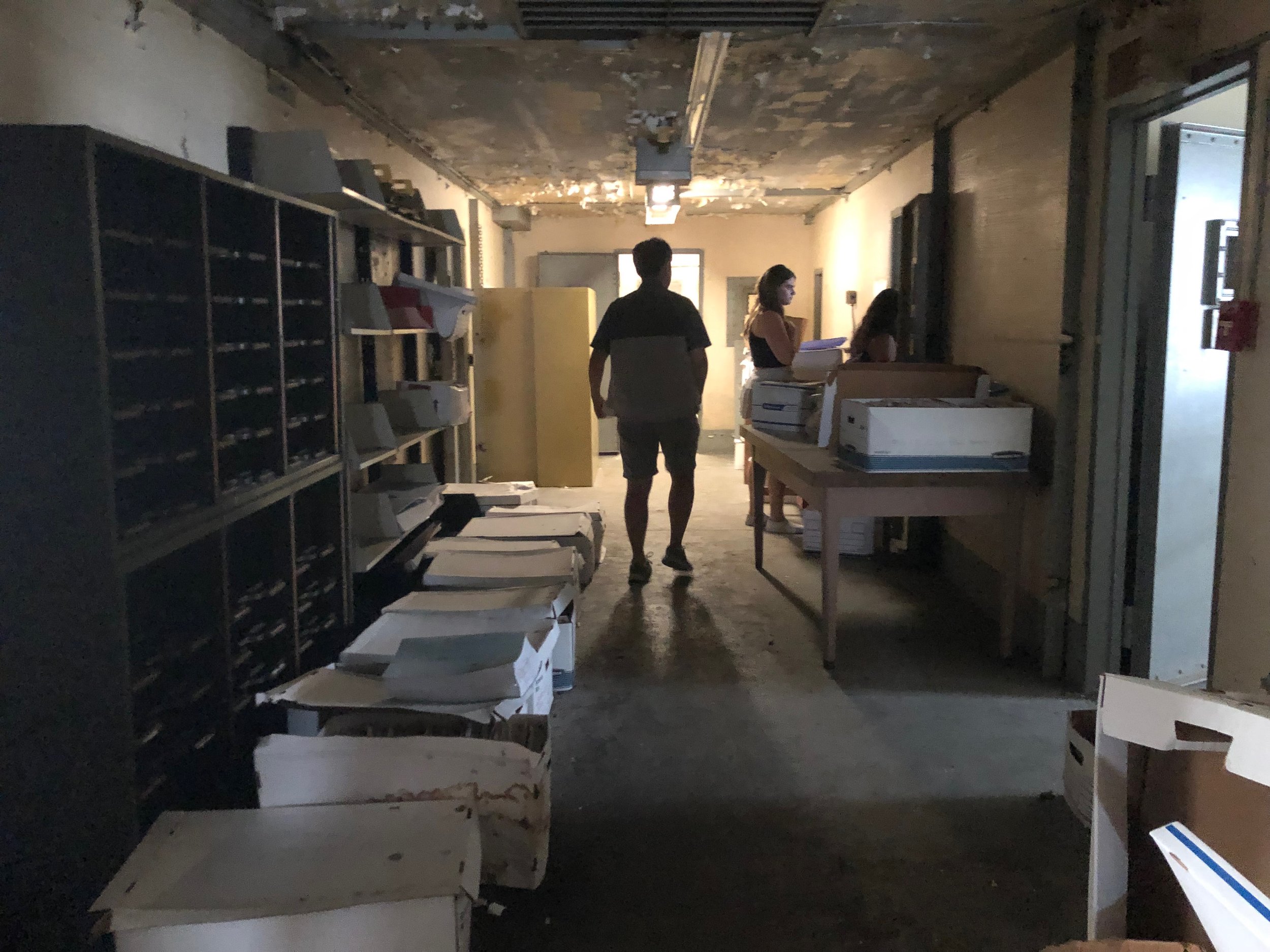Tim Gautreaux’s Floyd’s Girl was an introduction to the Cajun South, a part of Louisiana I was not that eager to investigate besides eating delicious crawfish and dancing. I wasn’t too excited for numerous reasons, often hearing about the negative sides of Cajun culture. That they have strong ties, and strong pride in their Cajun roots, and how they have gone about maintaining this pride generation after generation. Rumor has it that they aren’t very friendly, especially to people like me. You don’t hear very good things about rural Southern Louisiana in liberal California, and I am confident they do not hear many good things about us. I was hesitant of course, worried about resistance and lack of openness to me and my friends.
As it turned out it would be the exact opposite. Tom Fiddle and his friends opened their doors to us and welcomed us with open arms. Quite literally to think about it, as he personally taught me how to Waltz to a good Cajun song and offered us some of his boudin sausages; opening his home to this diverse group to be engaged with swamp culture. Louisiana Cajun culture was not the ignorant song that we normally hear, but this experience truly highlighted that what Cajuns are about is their love for the community; their intense love to preserve each other and uplift each other just like Gautreaux’s characters in the story that embodies this culture. Maybe a little bit of a dysfunctional community, they had each other’s back and would do anything to support each other.
The way the Cajun people interacted and protected their youth like a village is not too far off from how the Black community depicted by Ernest Gaines in the 1940s acted. There are so many similarities in our culture, the way we uplift and want the best for each other. We are taught that we are so different from each other, but we are quite the same: looking for ways to preserve our culture and our people.
And I realized something while spending time with these folks; their fight for freedom, fight to liberate themselves from oppression, and the way they lean into joy and happiness through celebration is so much like the Black community in New Orleans, and all over. I saw a connection between the Black experience and how we have struggled for liberation and a place to call our own, and through it all celebrated our lives through love and joy. The people of Cajun Louisiana have been able to achieve that, and they protect it at all costs. This is something I truly admire about them.
I don’t think it is just that, though. People of the oppressed groups have so much in common with one another; from the fight for freedom to living their lives the way they want them. But as well, as trying to thrive in a world that tells us no. We all have in common that we are marginalized by the majority and live with pride in being ourselves and finding community in that. We are labeled wrongly, stereotyped for not being part of the majority and being proud to defy the norm, creating such a negative image of our liberation and our cultures. I am so like the people of Cajun Louisiana, and they are so much like me. We both fight for a way for our people to thrive and will fight for that.
I had a chance to chat with a lovely friend of Tom’s, who talked about how much this community meant to him. That he loved Cajun Louisiana, because of his friends and his own family he has created with that community. He spoke with so much passion, and with such vigor that if you messed with him, then you are messing with the whole community and that isn’t something you want to face. I know this feeling and identify with it so much; through my love for Black Los Angeles and New Orleans, and the way it has formulated me into the woman I am. I see myself in him, from his passion to his need to protect this community because it has made him, him.
This love for the community is so beautiful. I found so much of myself in Louisiana and found it repeatedly through the novels we read.
This was a common theme throughout my journey through Louisiana. From The Awakening, An Interview with a Vampire, Coming Through Slaughter, The Moviegoer, A Lesson Before Dying, and Same Places, Same Things. In each new location from Grand Isle, New Orleans, Baton Rouge, and Lafayette, and in each new book I had the opportunity to read, I was taught about the human desire for community, and when you find it and foster it, this connection grows into the family. I was always taught you can choose your family, and it is not always your blood family. Creating your family and your community is what is so beautiful about life, and maintaining those relationships is what makes life worth living. Having a community makes life worth living.
Community is more than just having people around you, it is what makes people heal. From Hurricane Katrina and the people in New Orleans who couldn’t receive help, to the Appalachia community that was forced down to the swamps of Louisiana. There is so much relating to the oppression of the Black people, to the Vietnamese during the Vietnam War, and to the Trans and Queer people in America fighting their own battles now; we are all the same, looking for community and a place to heal and then, therefore, thrive. We heal when we find community, even when the oppression is so suffocating, that we can’t wake up in the morning, we push forward for the community.
Repressed groups are often put against each other, making it a world where not all of us can exist, nor exist in peace together. There is so much the Black community can learn from the Cajun people, and the Cajun people from the Black community, if only we could see the similarities between each other. If we weren’t intentionally put against each other, imagine the world we could have? When people can find a common link between each other, and slow down and foster that; what a beautiful thing.
I applied to this Maymester with ambitions to explore a new world, maybe native to my ancestors, and find myself. I found myself, and much more. I found a much happier me within the community I was able to foster around me, I found strength and leadership through them. Spending a deep 4 weeks with these wonderful people, and with Andrew’s guidance, I discovered a new love for life that was lost years ago to me. I am endlessly grateful.
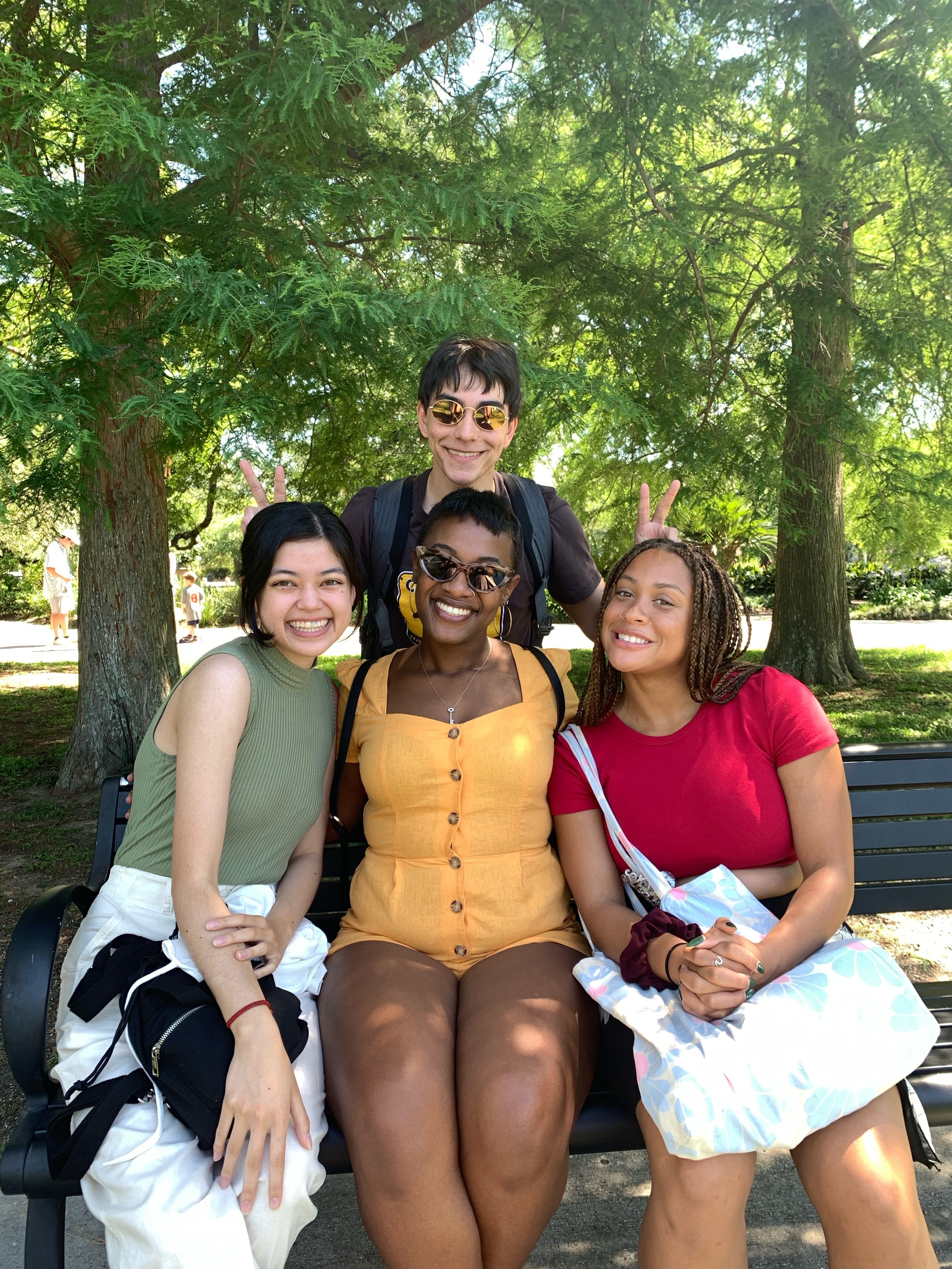
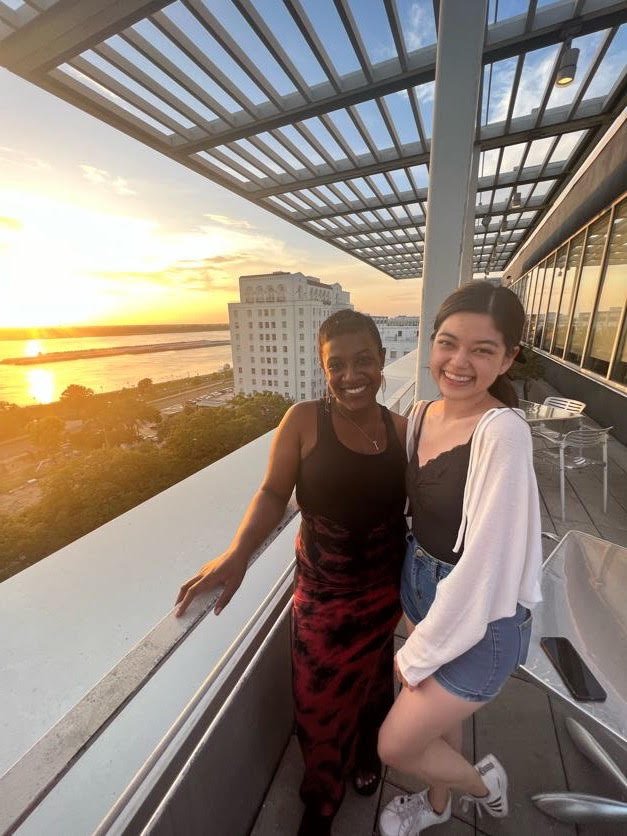
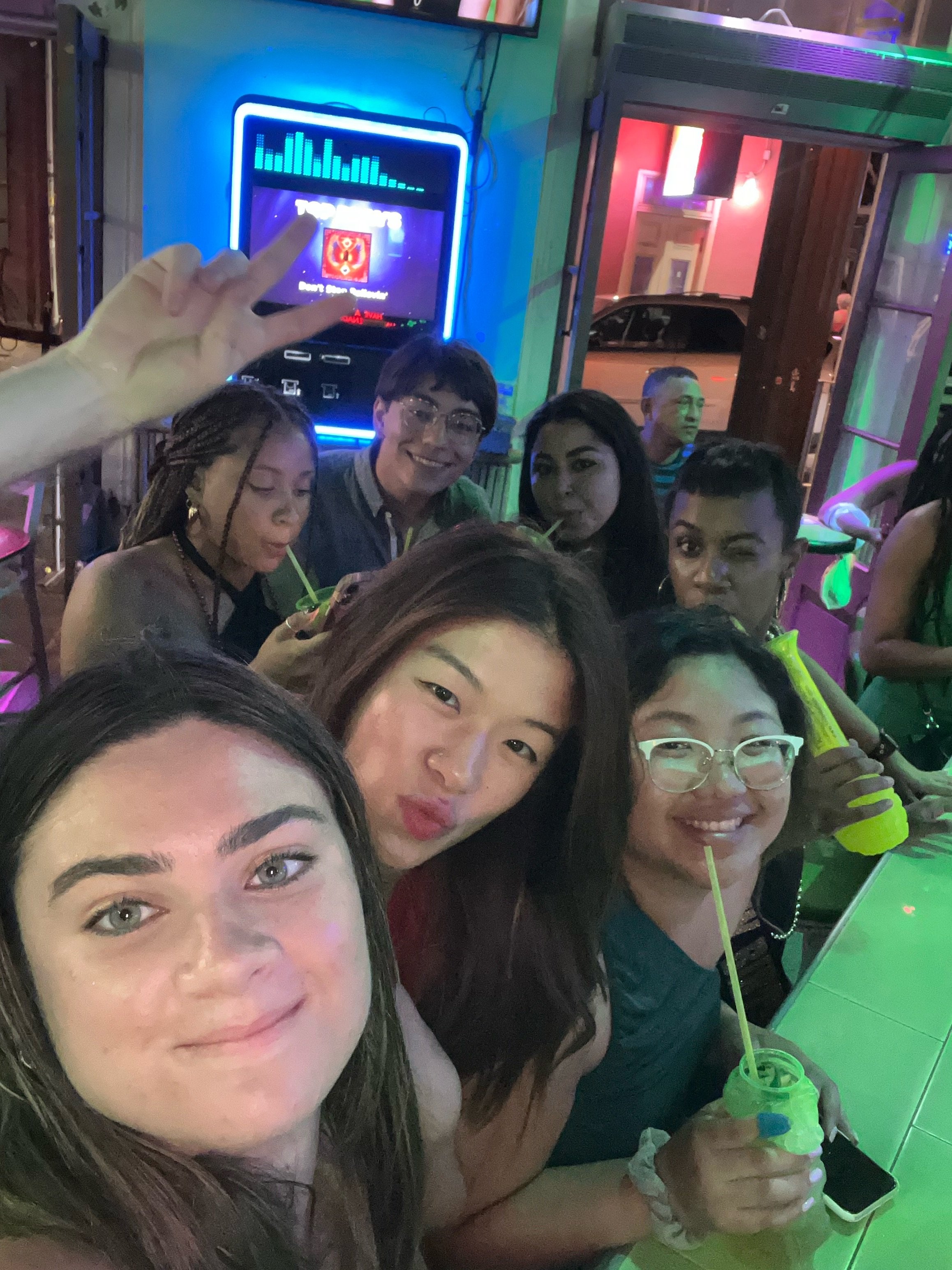
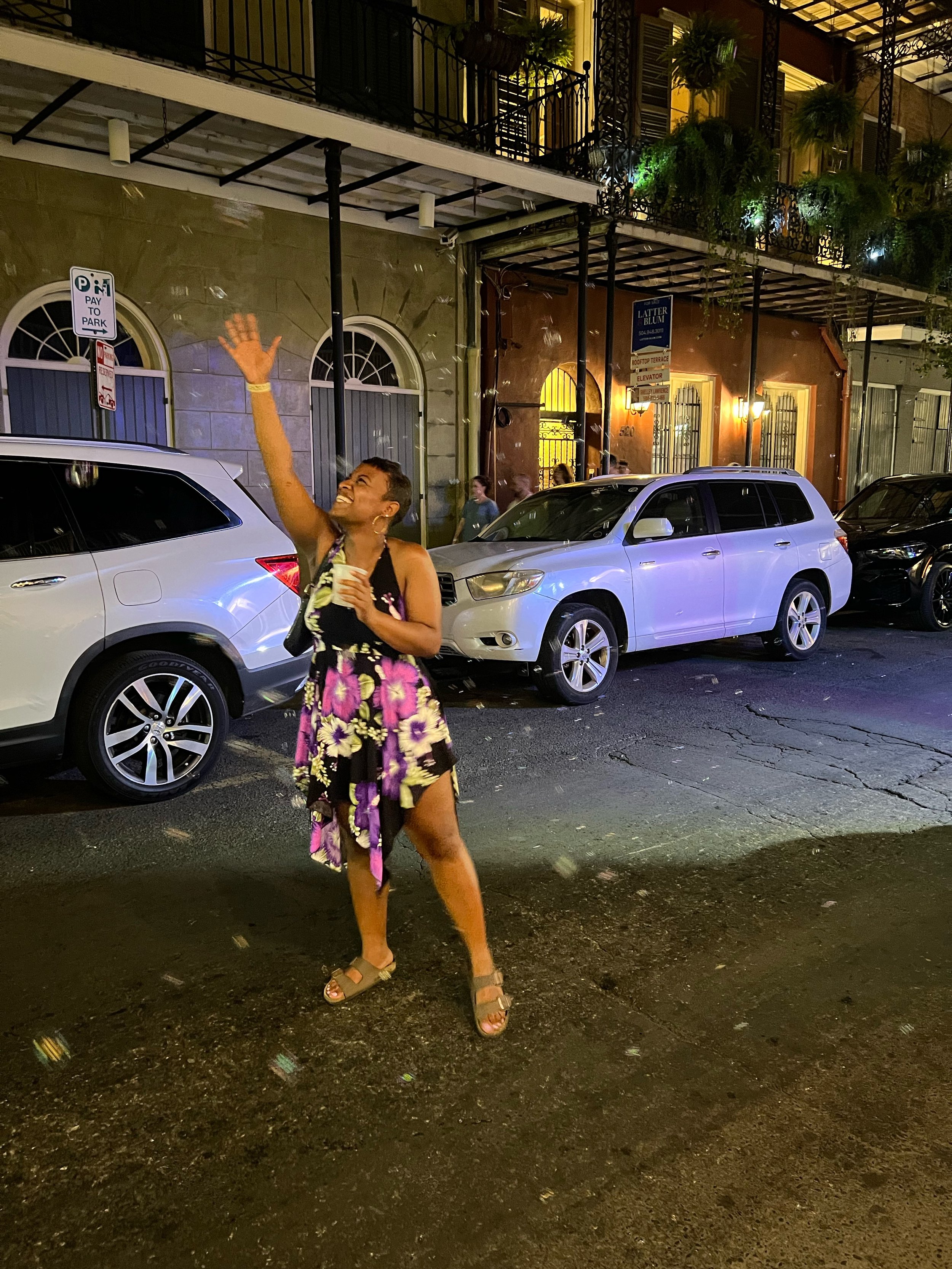
When we first landed in Louisiana, I was so excited because I never got the chance to learn about where my family comes from, and found a duality when not being able to merge my identities and feelings. Right when I got off the plane for the first time and heard the bellows of Jazz music and the joy in the second line parade, I felt a sense of true self. I found myself. I found myself along with more knowledge, more love, and more family. I am leaving here with so much more understanding about myself, and so much more love for myself and life. Like Grant and his experiences in Bayonne, I was confronted with my duality of self and how to merge those two. I found that merging those two is through the community I formed and that uplifts me, the sound of music coming from the French Quarter, the loving friends I made, and the love that is given so freely in New Orleans.
At this moment I am incredibly happy. But I am also scared, I am scared to lose this sense of self that I gained here. I talked to so many people and became friendly and more ambitious, kinder and more caring. Louisiana and Andrew have changed me so deeply, and I love who I am today. I found self-love in Louisiana. If anything, Gautreaux and the Cajun people of Louisiana have taught me something, although it is a different place at home, I can absolutely do the same things I found in New Orleans.
From the beauty of the constantly changing environment in Louisiana, and the pain and strife in the long and recent history, to the celebration and love and life, I’ve learned to be grateful for endings because rebirth is coming. Thank you, Louisiana, for everything.
Andrew, thank you for everything. I could not thank you more for your kindness and insights. I am leaving this trip so much different than I came on, and I am endlessly grateful for being able to absorb your knowledge and wisdom. You once said I was the heartbeat of this course (which made me cry) but thank you for allowing me to be. Without you, I do not think I would have been so brave for so many challenging moments or been encouraged to speak up, or just be authentically me. I have grown so much because of your lessons and guidance. Thank you for changing me and challenging me, and allowing for this experience to change me. Through your words, actions, and everything really, I learned to embrace myself and gained a beautiful group of friends while doing so. For that, I am so thankful. Words cannot express how honored and grateful I am to have had this time with you. Thank you.
Also, I am in the best shape of my life due to this trip? Please get a workout plan started.
































